The Faroe Islands serve as an autonomous territory belonging to Denmark, which provides a unique setting for wild nature, varied culture, and calmness that draws many travellers who are looking for an alternative way to spend time. Islands unspoiled with dramatic landscapes take you into sheer untouched beauty, heavily punctuated with rugged cliffs, rolling green hills, and fjords submerged in mist. The local way of life is bygone in its traditions, very much characterized by Faroese hospitality, artworks, and deep regard for nature and the environment. Outdoor adventurers can find themselves engaged in endless exciting things to do on the Faroe Islands and exploring the vast coastlines.
Top 10 Things To Do On The Faroe Islands
From thrilling mountain hikes to serene coastal views and historic landmarks, here are some of the best experiences to explore on the Faroe Islands:
1. Hike To Lake Sorvagsvatn

Photo: kallerna / Wikimedia Commons
Lake Sorvagsvatn, also called Leitisvatn, is the largest lake in the Faroe Islands, covering approximately 3.4 square kilometres and is situated on the island of Vágar. From some angles, however, it gives the illusion that it is floating above the sea. The hike to the famous viewpoint at Trælanípa-a steep cliff used in old Viking days to execute the condemned will take about an hour. The lake’s outflow forms Bøsdalafossur waterfall, which ends its course straight into the Atlantic Ocean. While the hike is achievable, sturdy outdoor walking footwear is highly recommended owing to the uneven terrain.
Location: Vagar Island, near Sorvagur
Duration: 1-hour hike each way
2. Birdwatching At Vestmanna Bird Cliffs
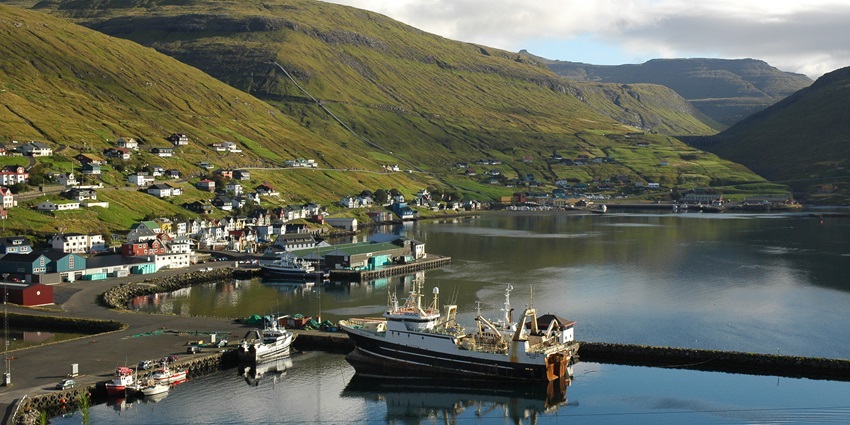
Photo: Magsedal / Wikimedia Commons
The Vestmanna Bird Cliffs on the western shores of Streymoy are one of the Faroe Islands’ best natural attractions. Over 700 meters high from the sea, these dramatic cliffs house thousands of seabirds, from puffins, guillemots, kittiwakes to fulmars. An adventurous boat tour from the village of Vestmanna takes visitors to feel the grandeur of these towering rock faces, deep grottoes and sea caves. Best birdwatching is done in this period from May to August when most birds are nesting. The cliffs are historically significant as they were the hunting cults of the early Faroese settlers. Tours may not be conducted in all weather conditions, so it is essential to check beforehand.
Location: Vestmanna, Streymoy Island
Tour Duration: 1.5 – 2 hours
3. Experience Culture In Torshavn
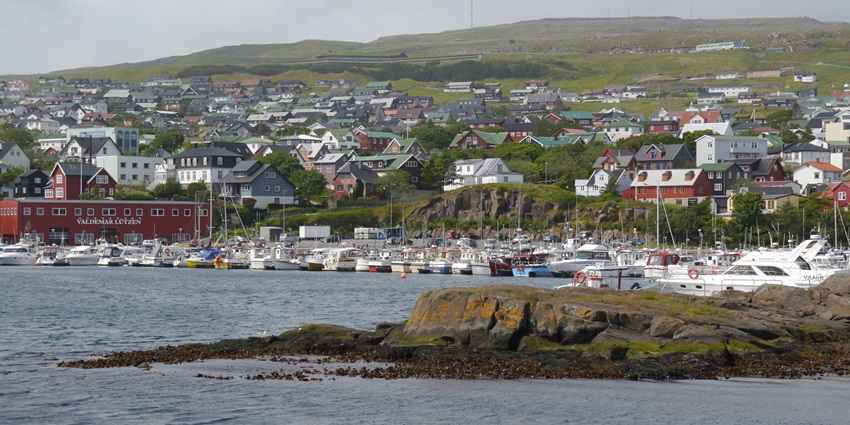
Photo: Zairon / Wikimedia Commons
Tórshavn – the capital of the Faroe Islands – is one of the smallest capitals in the world and yet has so much to offer in culture. Its historic centre is Tinganes, and here, narrow alleys are lined with traditional turf-roofed buildings that once housed Viking assemblies. An important cultural institution, the Nordic House, holds concerts, theatre performances, and art exhibitions in honour of Nordic heritage. Tórshavn is also home to the National Museum of the Faroe Islands, which showcases Faroese history, folklore, and archaeology. The city is also teeming with restaurants like Barbara Fish House and Ræst which serve modern Faroese dishes.
Location: Tórshavn, Streymoy Island
Timings: 10 AM – 5 PM
4. Visit The Isolated Village Of Saksun
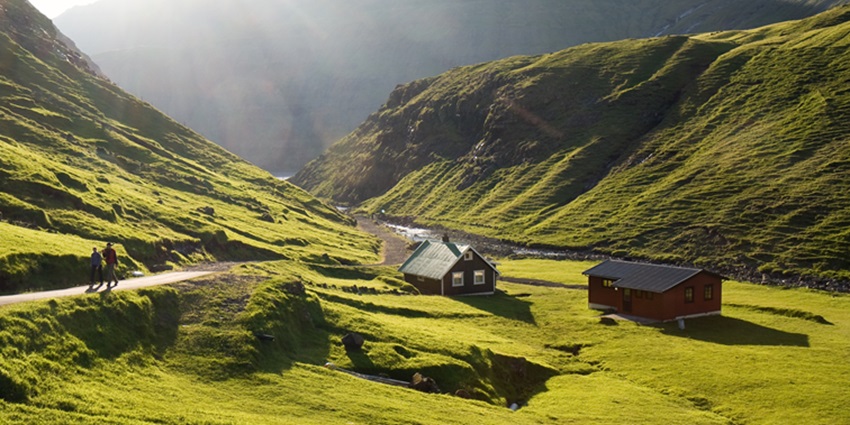
Photo: Stig Nygaard / Wikimedia Commons
The village of Saksun is one of the most beautiful places in the Faroe Islands and is situated on the northwest coast of Streymoy. It is surrounded by towering mountains along the edge of a peaceful lagoon, which used to be a natural harbour until a storm devastated the access to the sea. The village has less than 10 homes. The two main attractions of Saksun are its beautiful 19th-century Saksun Church, which offers stunning views of the lagoon, and the Dúvugarðar farm, a historic homestead turned museum showcasing traditional Faroese farm life.
Location: Northwest Streymoy Island
Timings: 10 AM – 5 PM
5. Taste Faroese Cuisine In Kirkjubour
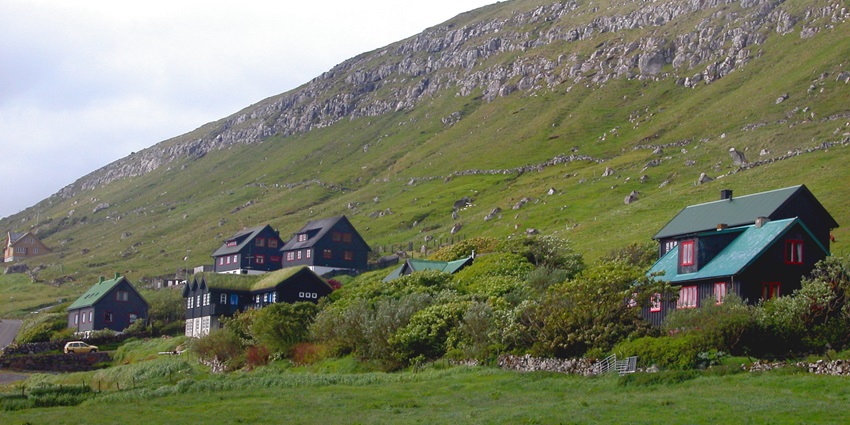
Photo: Erik Christensen / Wikimedia Commons
With Kirkjubøur being the southernmost settlement on the island of Streymoy, it can also be termed the heart of Faroese memory and culture. It boasts medieval ruins, old traditional Faroese houses, and fine old, authentic Faroese cuisine. In terms of their reach, this former region also had Magnus Cathedral and the Church of St. Olav, which was built out of brick in the 1200s. Kirkjubøur is also a great place for your dining experience. It is famous for some of its delicacies, such as fermented lamb (skerpikjøt) and dried fish, and also includes seafood. The Michelin-starred Koks received such honours when it was formerly located in Kirkjubøur as the first Faroese ambassador of fine dining to the world and focused more on preserving the traditions.
Location: Southern Streymoy Island, near Torshavn
6. Marvel At Mulafossur Waterfall In Gasadalur
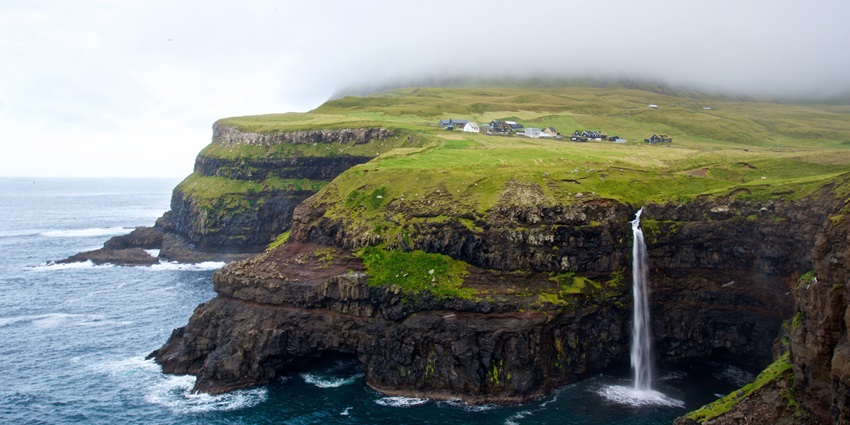
Photo: briantoronto / Wikimedia Commons
Múlafossur Waterfall, situated in the village of Gásadalur on Vágar Island, makes up one of the most visited natural sites in the Faroe Islands. The waterfall plunges from a cliff into the Atlantic Ocean, creating a captivating sight with lush hills and steep cliffs in the background. For many years, Gásadalur was the most inaccessible village of the Faroes. Only a very steep mountain trail was there by which one could reach the village until the tunnel was built in 2004 that connects it to the rest of Vágar. Today, the village is very sparsely populated, with only a handful of inhabitants, making it quite nice and quiet. The best time to go is in summer.
Location: Gasadalur, Vágar Island
Entry Fee: Free
7. Explore The National Gallery In Torshavn
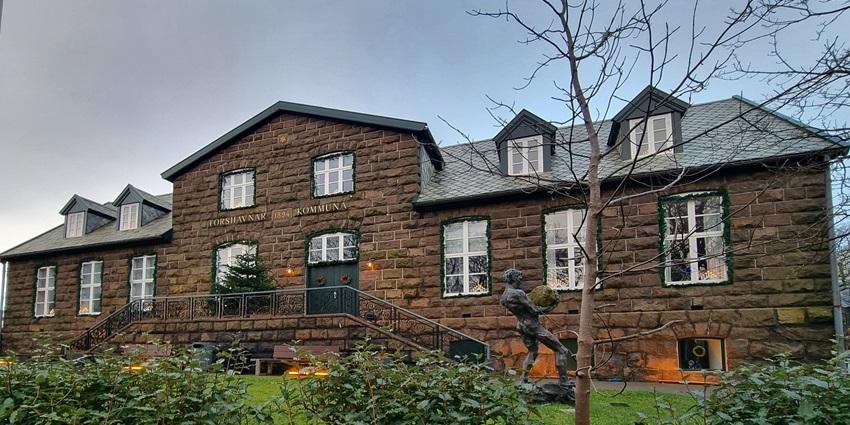
Photo: HRoued / Wikimedia Commons
Listasavn Føroya is the country’s leading art institution located in Tórshavn. There is an extensive collection of Faroese art dating from the 19th century to the present that represents the islands’ landscapes, culture, and identity. Works by notable Faroese artists such as Sámuel Joensen-Mikines, Ruth Smith, and Ingálvur av Reyni, were able to impressively reflect the rugged beauty and isolation of the islands. The temporary exhibitions feature presentations of contemporary artists using themes associated with nature, tradition, and identity.
Location: Tórshavn, near Viðarlund Park
Timings: 11 AM- 5 PM
8. Take A Boat Trip To The Sea Stacks Of Drangarnir
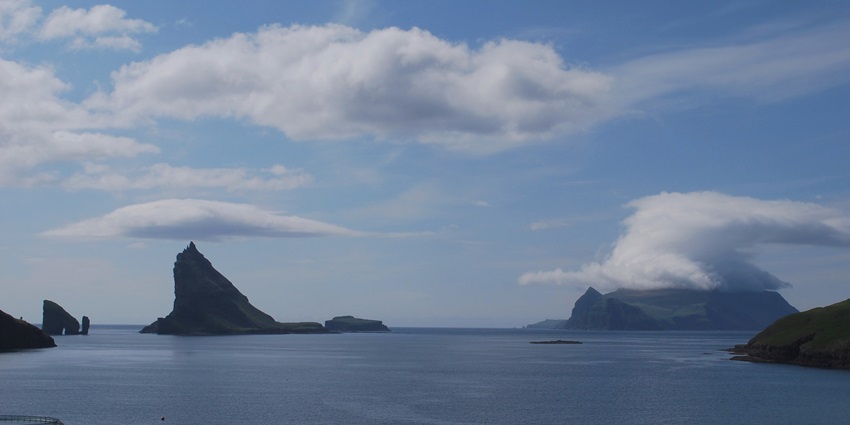
Photo: Erik Christensen / Wikimedia Commons
It is located off the coast of Vágar and contains two remarkable sea stacks, appropriately named, Stóri Drangur (Big Stack) and Lítli Drangur (Little Stack). A remarkable and natural arch exists within the larger one, which thus makes it one of the most photographed landmarks in all of the Faroe Islands. The best way to see Drangarnir is to set off on a guided boat tour from Sørvágur, getting you close to all the dramatic rocks and marine wildlife. Alternatively, there is quite a challenging hike one can do coming from Sørvágur to a viewpoint above the stacks.
Location: Off the coast of Vágar Island
Best Time To Visit: April- September
9. Go Deep-Sea Fishing From Vestmanna Or Klaksvík
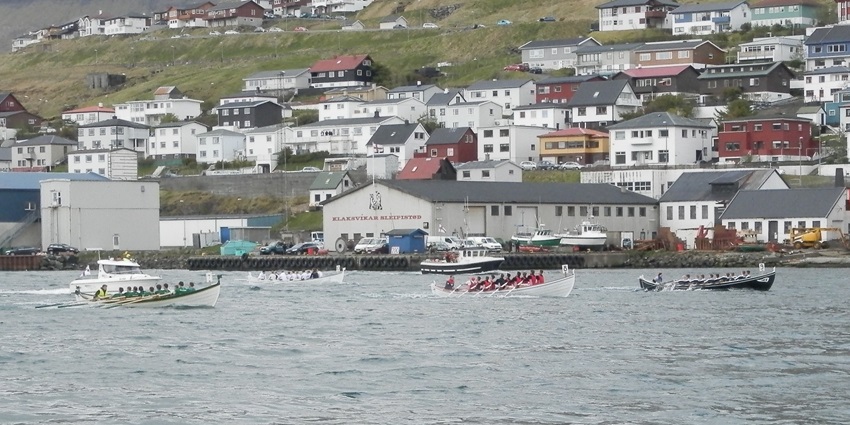
Photo: EileenSanda / Wikimedia Commons
Fishing has for hundreds of years formed an essential part of Faroese culture, and deep-sea fishing tours allow visitors to join some of it. The best embarkation points for fishing excursions in Vestmanna and Klaksvík allow the angler-the-well-taught tourist to catch Atlantic cod, haddock, and halibut in the clear north-Atlantic waters of the west coast of the islands. The few-hour tours are usually led by local fishermen who teach the tourists some of the tricks and traditions of Faroese fishing. Most tours also include cooking up freshwater fish on board. The finest fishing period extends from May to September, when the sea is calmer, and fish abound.
Location: Vestmanna (Streymoy) or Klaksvík (Borðoy)
10. Watch The Northern Lights From Vioareioi
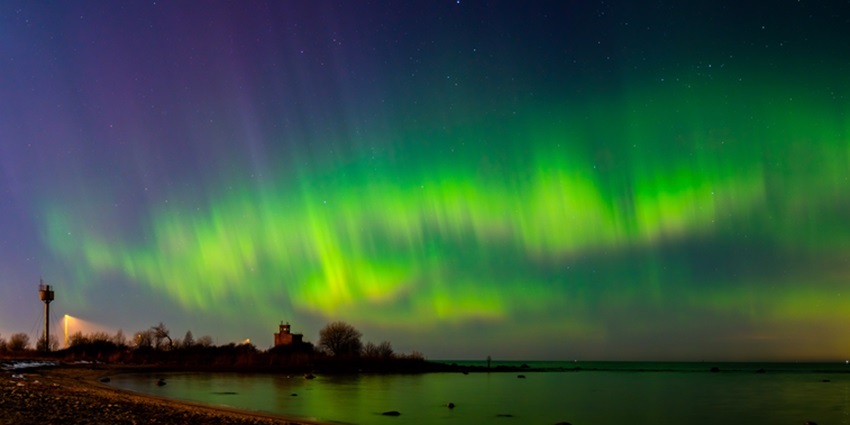
Photo: Maxim Bilovitskiy / Wikimedia Commons
Viðareiði, the northernmost village in the Faroe Islands, is truly one of the most unique places to see the Northern Lights. The town is optimally positioned for witnessing the aurora borealis on clear winter nights, as it is positioned so far away and has such minimal artificial light. The most favorable months for Northern Lights observation are the period between October and March, with the midnight hour being considered the prime time. The beauty of this village is quite amazing, surrounded by lofty mountains and dramatic coastlines. This area is located between the church of Viðareiði from the 19th century and the North Atlantic. Visitors should check the aurora forecast before heading to this place.
Location: Vioareiði, Viooy Island
Timings: 24*7
Entry Fee: Free
The islands of Faroe comprise an exceptional combination of tumultuous tear-drop-shaped landscapes, a rich cultural heritage, and adventure-filled outdoor experiences. Whether you’re in a settlement at the Atlantic beach, sampling Faroese food, or gazing at the Northern Lights, every moment seems like a dream in Nordic fairy tales. Untouched beauty and unique experiences are reframed as dream destinations for nature lovers and explorers-in-arms wannabees. Let TripXL help you plan your perfect tour with highly guided tours, smoothly coordinated experiences, and insights from the locals.
Cover Photo: Mirek237 / Wikimedia Commons


 WhatsApp
WhatsApp
 Twitter
Twitter









